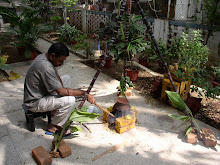Senate Formaldehyde Hearing Brings Back Shades of the 1980s
The Consumer Protection, Product Safety and Insurance Subcommittee of the Senate Commerce, Science and Transportation Committee held a hearing on “Formaldehyde in Textiles and Consumer Products” on April 28.
The following witnesses participated:
Senator Casey. Senator Casey said Dr. Brookstein had called the formaldehyde issue to his attention and it represents a danger to consumers. He called for the GAO to begin its study of formaldehyde in textiles, required under the CPSIA 2008, soon because of the seriousness of the hazard.
Dr. Etzel. Representing the American Academy of Pediatricians (AAP), Dr. Etzel presented recommendations from the Academy:
Dr. Brookstein. Citing his 30+ years in the textile industry, he said the long term effects of formaldehyde are not understood and that there are serious dermatitis and allergic reactions problems from products that contain the chemical. He said there are no formaldehyde regulations in the US because of a lack of focus, though numerous other countries do have standards. He recommended that:
Except for Senator Casey, all witnesses’ bios and statements can be viewed at: http://commerce.senate.gov/public/index.cfm?FuseAction=Hearings.Hearing&Hearing_ID=5e44a84e-0d0c-4eea-ac75-fc9d83a111cd
2009 Annual Fire Conference will be held April 28 - April 30, 2009 at National Institute of Standards and Technology (NIST) in Gaithersburg, Maryland. NIST staff, grantees, experts from federal agencies, representatives of code developing organizations, fire and building professionals, and experts from academia and industry are invited to attend. The Conference will be held on the NIST Campus in Gaithersburg, Maryland. Registration, hotel, and other information will be available on the Conference homepage (http://www.bfrl.nist.gov/info/fireconf/).
Carbon Nanofibers Cut Flammability of Upholstered Furniture
Posted: 29 Apr 2009 07:34 AM PDT
Carbon, the active ingredient in charcoal, is normally not considered a fire retardant, but researchers at the National Institute of Standards and Technology (NIST) have determined that adding a small amount of carbon nanofibers to the polyurethane foams used in some upholstered furniture can reduce flammability by about 35 percent when compared to foam infused with conventional fire retardants.
Read the rest of the story at www.nist.gov.

No comments:
Post a Comment